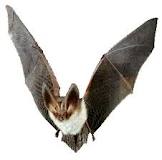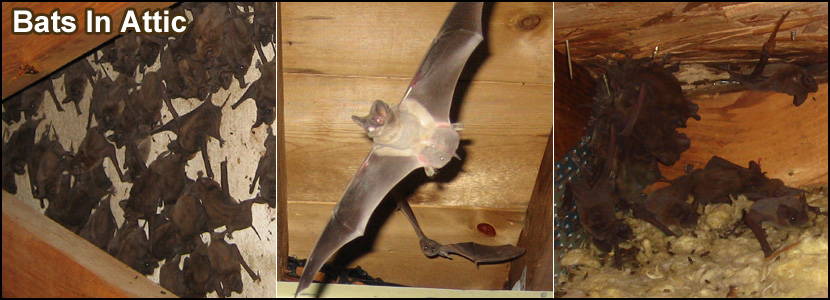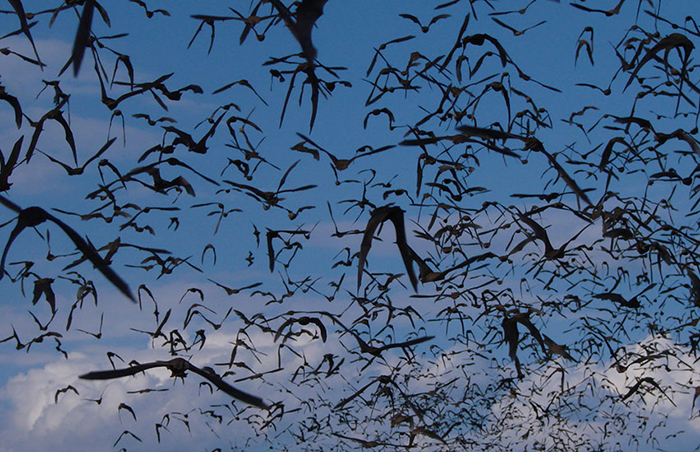How To: Get Rid of Bats
Do you have bats in your attic? Wanna get rid of them? Then keep reading and I’ll show you how to get rid of bats and how it is easier then you may think.
Just in case you’re wondering this is not a post on bat wrestling. You don’t have to don a batman outfit and physically remove the bats yourself. The process of bat exclusion, as it is called, is DIY friendly and not harmful to the bats in question which is extremely important because bats are a protected animal in most states.
While they may be protected and they provide a huge benefit by eating upwards of 3,000 insects a night, most of us don’t want them in our houses. Even though the stereotype of bats being rabies ridden rodents looking to suck your blood is a largely a farce (only about 1% of bats are rabies carriers), their feces “guano” contains Histoplasma capsulatum, a fungus associated with Histoplasmosis which is a lung infection similar to pneumonia in humans. The bats may not be a problem but their droppings certainly are, so removing them from your house and cleaning the mess is important.
Bats prefer to nest in the same spot every night and while they may migrate depending on the season and the region, they likely will return if you don’t take steps to prevent it in the future. Let’s get into the process and how to get rid of bats yourself at your house.
How To Get Rid of Bats
Bats like dark and cozy areas to sleep during the day and nest. While they don’t build a nest per se they do search out a protected area where they can sleep and give birth. Old houses make a great home for them because there are usually plenty of gaps for them to sneak in. They need only find a hole about 3/8″ to 1″ wide to squeeze through. Once they’re in, the rafters make a great place for them to hang from and get some rest.

Bats in Houses
Bat encounters in the home usually happen at the most inopportune times. One minute you’re watching the news, and the next minute, without any warning, a bat zooms through the living room. Soon the dog, cat and family are in an uproar either trying to swat or to run away from the intruder. While this does not happen very often, if it happens to you, you’ll want to keep reading to find out more about what it means and what you should do.
Summer Visitor–The occasional lone bat that enters a house during warmer months in Maryland is usually a young bat that simply made a mistake. Their instinct leads them to investigate new areas, including the inside of houses, usually with fatal results.
If you are certain that no contact has occurred between the bat and other people or pets inside the house, then you can follow one or several of these suggestions:
Trap the bat in a room and open a window. The bat will find the opening and exit on its own.
Call a bat removal expert (wildlife control cooperator) .
NO PERMIT FROM DNR IS NEEDED TO REMOVE THIS BAT.
Put on thick gloves and wait until the bat lands on a wall to rest. Place a bowl over the bat and slide a piece of cardboard under the bowl. Take the bowl outside and release the bat.
Inspect the outside of your house for signs bats are roosting elsewhere in your house.
Winter Visitor –The occasional lone bat that is found inside the house during colder winter months is likely to be a Big Brown Bat. Big Brown Bats are the only species that can over winter in homes. The warmth of the house and/or outside temperatures can rouse these bats from hibernation, sending them in search of water and insect food.
Colonies in the House
Discovering a colony of bats living in your house can be disturbing and unsettling. The following answers to Frequently Asked Questions will help you understand the problem and guide you towards diagnosing your own situation and deciding the best course of action. These guidelines will help you effectively remedy the problem and guard against future problems.

Excluding Bats – Helpful Tips
Behavior and Biology
Most of the time bats root in natural shelters like drainage pipes, hollow trees, and caves, but can roost and breed within occupied buildings during warm weather. During the first warm days of spring, most bats leave their overwintering/hibernating sites and enter structures. Most of these bats are females preparing to birth in June and July.
Inspection
Inspect possible exit and entry points that the bats are using and any structural defects that the bats are using for entry. Common entry areas include louvers, rooflines (between the roof sheathing and the fascia boards). Openings of 3/8 inch or larger are sufficient for bat entry. Droppings on the ground, smudge marks, odor, noise can also give you a clue to their entry/exit points.
Inspect twice, at first dusk when the bats are first emerging and the second one during the daytime to find roosting areas. Unless it is unseasonably cold or rainy, bats will emerge each evening.
Inspect the roofline right before dusk. It may be necessary to position two or more people at different angles of the structure to view multiple rooflines at a time when the bats are emerging. This will reveal entry and exit points.
Bats and Rabies: Only a small percentage of bats carry rabies, but proper clothes (coveralls, hard hat and heavy leather gloves) should be worn during any bat control procedures.
We are having a problem with bats flying around our living room window and in the alcove at the front door. Our pest control company has no answers for us except for a spray that will discolor the paint on our house. At present we are using the sticky strips used for catching mice. We tacked two of them in the alcove area. After a month, we caught nine. Do you have a suggestion for us on how to discourage these flying pests from using our front porch? They leave their droppings everywhere.
We seem to have a colony of bats (at least 60-75). They have made their home in the exterior wall of our garage. How do we get rid of them? Will they stay forever or will they go away?
You need to fashion a one-way door, so the bats can come out but not come back inside. Another thing you can do is to seal the entry points at night while the bats are out. I would advise you to do this in the spring. They are nesting with the young in the fall. Many babies and females may be inside at night. Also if you provide bat houses for them in the area, they will stay around to kill all your other flying insects

Bats: advice for homeowners
Roosting habits vary by bat species. Pipistrelle bats are often found in crevices whilst other species, like brown long-eared bats, tend to need large open loft spaces. These seasonal visitors can form maternity colonies in properties from May, normally then leaving in early September. Very rarely, a bat roost will cause an issue, for example if it’s particularly large.
Bats in Houses helpline
Where necessary we may arrange for one of our experienced bat workers to visit your house if it will provide further help. There is no charge for this, and we offer the service whether you own or rent your home, as long as you live in it full time. Whilst our bat workers are able to collect information that will help to resolve the problems caused by bats, they cannot carry out any works to your building or exclude/take-away the bats.
Bats are highly specialised animals and the only true flying mammals. Long-lived and intelligent, they have complex social lives. Bats occur across, including on many of our islands – though in Shetland only as vagrants. North of the central belt, there are generally fewer bat species the further north and west you travel.
Bats have a highly advanced echolocation system that allows them to catch tiny insects and avoid obstacles, even in complete darkness. As they fly, bats produce a stream of high-pitched squeaks. By listening to the echoes, they can produce a ‘sound map’ of their surroundings.
Bat roosts – and other signs of bats
Bats are woodland animals, but many species have come to use roosting sites in buildings as the availability of natural roosting sites in trees has fallen. They have well-established traditions and tend to return to the same sites year after year.
How To Get Rid Of Bat Wings
Simple Steps to achieve well-defined upper arms
Excess weight is a quite common issue that plagues millions of people. Inner thigh fat, chubby belly, sagging buttocks – all these ‘trouble spots’ stop people from feeling confident in their own skin. Bat wings belong to this list as well. People who have flabby upper arms feel self-conscious because of the littlest things like waving. They are forced to wrap themselves up in layers of clothes and stick to long-sleeved tops even when it’s scorching hot outside. All of it takes a major toll on a person’s self-image and mental health, that is why it is so important to either accept yourself the way you are or eliminate this issue as soon as possible. Keep reading to find out how to get rid of bat wings once and for all
How to get rid of bat wings?
Bat wings are a quite common issue that has mainly two causes. It is widespread among people with excess pounds and among those who have lost a lot of weight. Many dieters find it quite challenging to get rid of bat wings. The main problem is that it is impossible to spot reduce your body fat. This case is not an exception. If you want to say goodbye to your bat wings, you should stick to expert-approved tried-and-true methods like the combination of a healthy diet, caloric deficit and regular workouts
Your diet should be well-balanced and should provide you with all the necessary nutrients. On average, an adult individual needs 2000-2500 calories a day. Fresh fruits and vegetables, whole grains, dairy, lean cuts of meat, fish, eggs, nuts and seeds are packed with essential nutrients. Olive oil, canola oil, nuts and seeds – these foods are rich sources of healthy fats that are vital for the normal functioning of your body.
Healthy diet should be combined with different types of workouts for major muscle groups. If your aim is to lose weight, it is recommended to have 35 minutes of moderate to high intensity workout per week
How to get rid of bat wings: exercises
There are slews of effective exercises that can help you get rid of bat wings. Some of them are listed below. You should perform 2-3 sets, 10-15 reps. Make 30-60-second pauses between the sets.